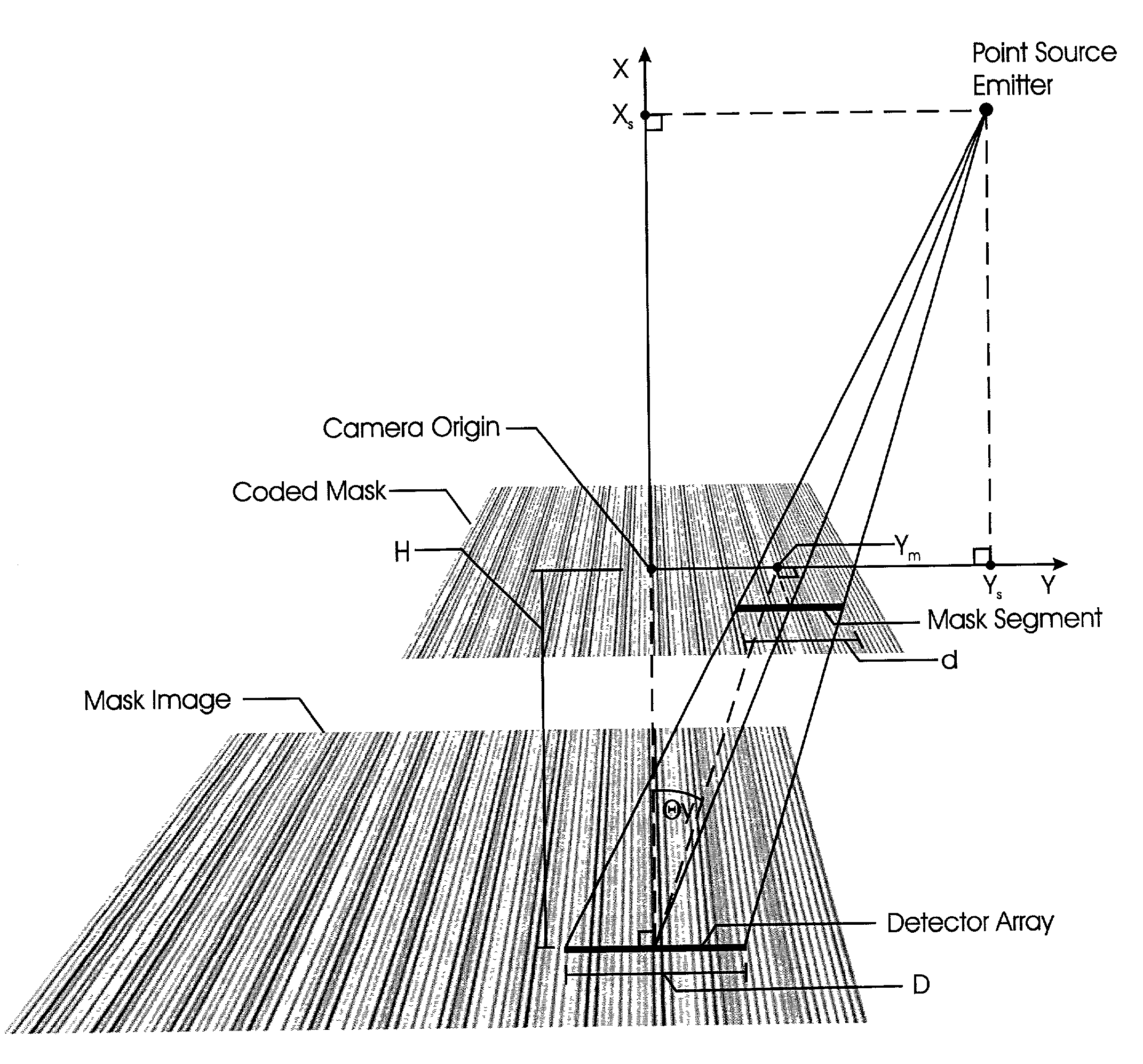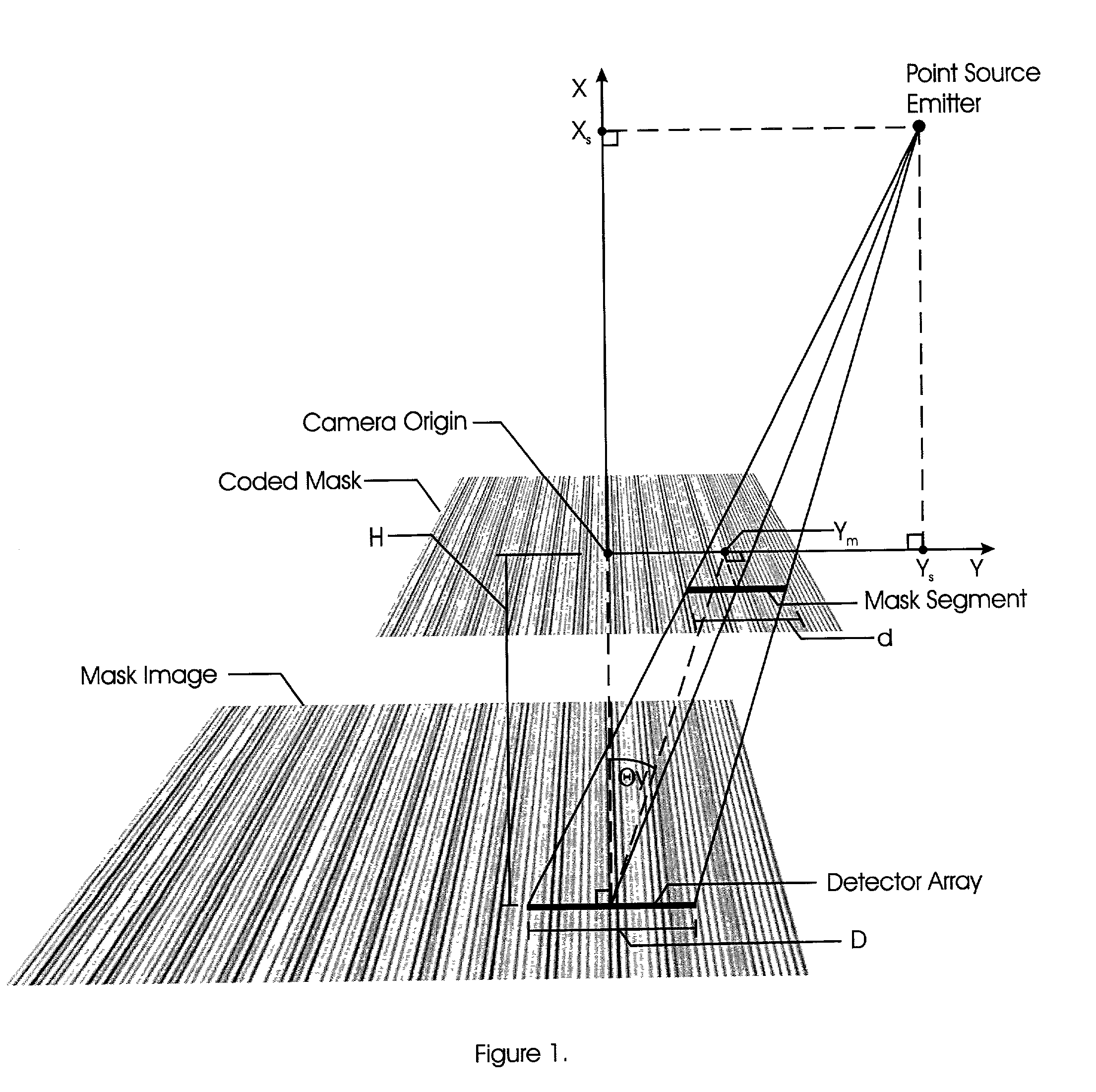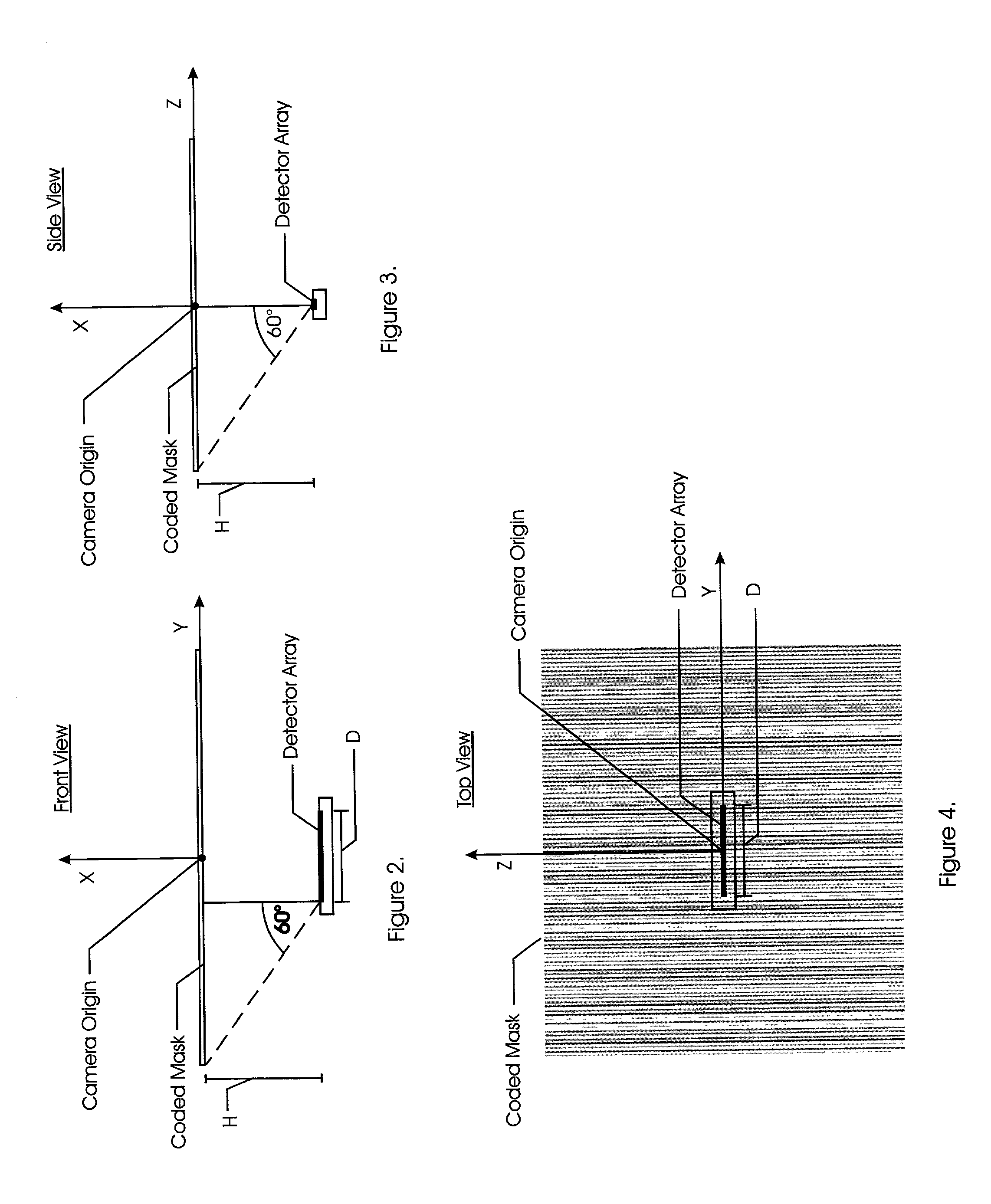Range adaptable system for determining the angular position and distance of a radiating point source and method of employing
- Summary
- Abstract
- Description
- Claims
- Application Information
AI Technical Summary
Benefits of technology
Problems solved by technology
Method used
Image
Examples
first embodiment
[0062]A variation in the first embodiment uses an additional component to the mask pattern, which is a sinusoid with spatially varying frequency. A preferred spatial dependency is linear dependence. The FFT of the image received by the detector array allows determination of the centroid of the varying frequency component and from this information, the approximate pattern position and corresponding angle of incidence are known. From this approximate solution, the phases of the single frequency components can be determined in sequence as explained above. The advantage and novelty of this variation is that the mask can be made much larger than the fundamental period of one array length. This also allows for the mask to be kept at a much greater distance from the detector surface, increasing the angular sensitivity and the ability to manufacture the device.
[0063]The following equation expresses the mask transmissivity function:
[0064]Mask1:=0.5+[cos(i·1001024·2·π)+cos(i·201024·2·π)+cos...
second embodiment
[0072]the present invention describes a method for determining the angular position of a point source of radiation with respect to a detector by examining the scales and shifts of periodic components of the projected image of a variable transmissivity mask. This embodiment uses the system depicted in FIGS. 1–4 and encodes the transmissivity mask with a single frequency component and a broadband component and computes the frequency spectrum of the received detector pattern. The single frequency component (fm) is generally chosen to be near the maximum frequency recordable by the imaging device and / or the maximum frequency within the diffraction limit, so that the best magnification resolution may be obtained. The broadband function used for correlation (fcorr) may be represented by a closed form function such as a polynomial or trigonometric function or it may be a numerical function, such as a pseudo-random sequence or universal redundant array. Ideally, the function will have a nea...
PUM
| Property | Measurement | Unit |
|---|---|---|
| distance | aaaaa | aaaaa |
| distance | aaaaa | aaaaa |
| distance | aaaaa | aaaaa |
Abstract
Description
Claims
Application Information
 Login to View More
Login to View More - R&D
- Intellectual Property
- Life Sciences
- Materials
- Tech Scout
- Unparalleled Data Quality
- Higher Quality Content
- 60% Fewer Hallucinations
Browse by: Latest US Patents, China's latest patents, Technical Efficacy Thesaurus, Application Domain, Technology Topic, Popular Technical Reports.
© 2025 PatSnap. All rights reserved.Legal|Privacy policy|Modern Slavery Act Transparency Statement|Sitemap|About US| Contact US: help@patsnap.com



